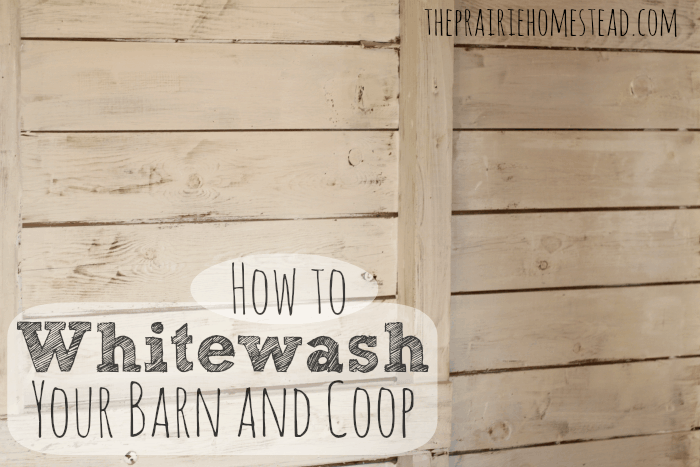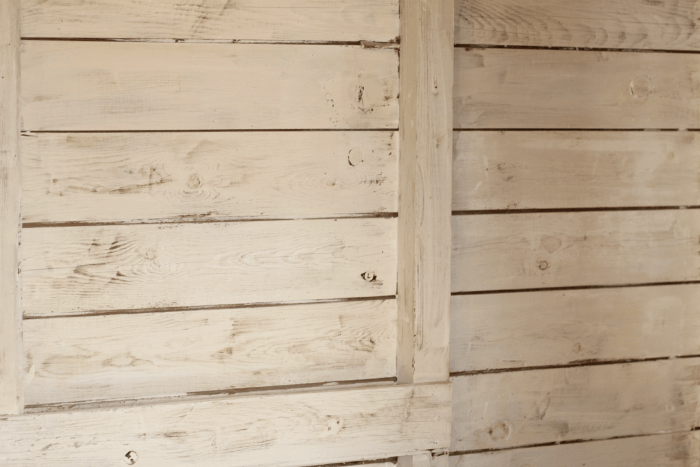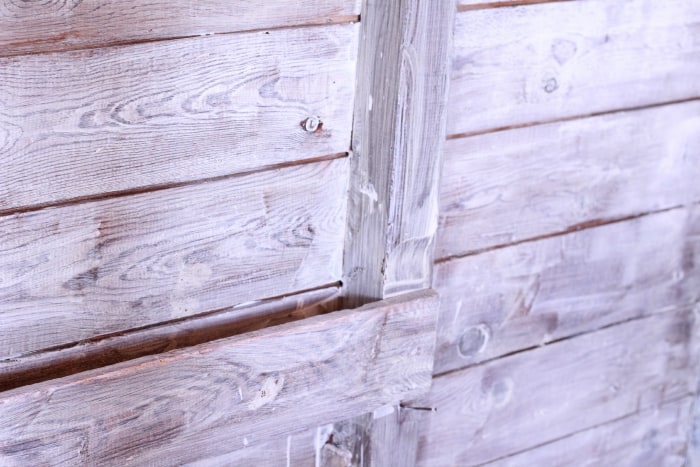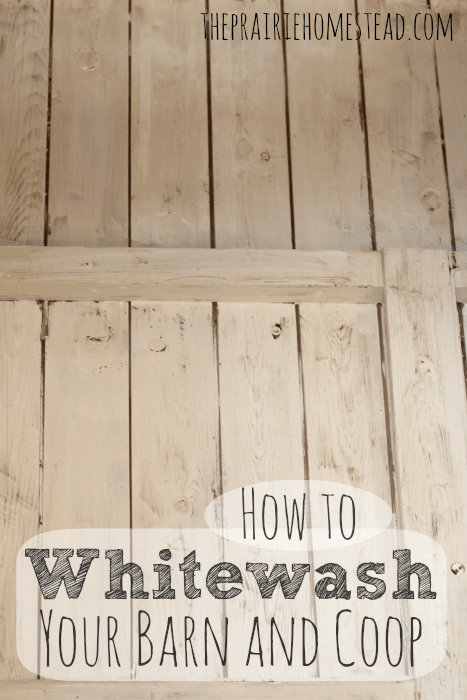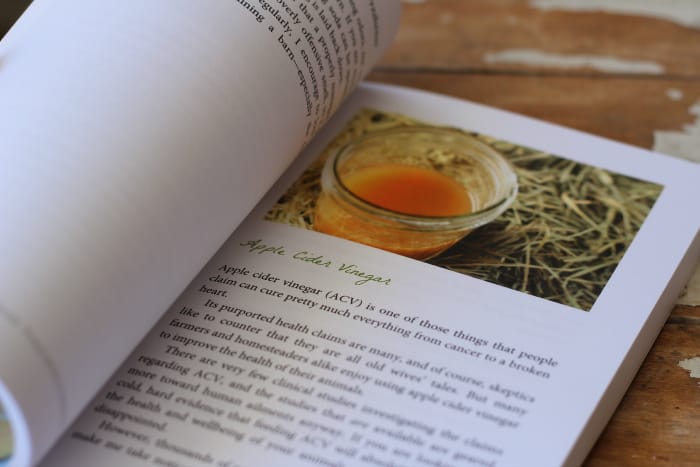Wanna know how you can instantly feel like a homesteading rockstar?
Whitewash something.
I say this because:
(a) It’ll make all your friends give you a weird look (I always enjoy that)
(b) It’s delightfully old-fashioned
(c) It actually does provide some benefits to your barn/coops (besides just making you feel cool)
Whenever I think of whitewashing, my mind instantly goes to Tom Sawyer and Huck Finn. But before we dive into a bucket of whitewash, let’s talk a bit about why this is something you’d even want to mess with.
What is Whitewash?
Sometimes you’ll hear people referring to “whitewash” as simply painting something with white paint, but in the most traditional sense of the term, whitewash is powdered lime (lime as in limestone, not the green fruit!) mixed with water.
Whitewashing has been a favorite paint/sealant in farms and homestead for centuries because it is effective, simple, and cheap. It’s also safe for animals, and you don’t have to worry about paint fumes.
It’s important to pay attention to what type of lime you are using in your whitewash–be sure to select hydrated lime (also called mason’s lime)– NOT dolomite lime or garden lime. We were able to find ours at our local building supply store, although you might check feed stores too. Hydrated lime is different than the type of lime you spread on the ground/garden, so make sure you have the right stuff!
Why to Whitewash?
Whitewash is the perfect coating if you want a bit of old-fashioned charm, but it also has some practical applications too. The main reason I chose to whitewash my chicken coop is to brighten the dingy, dark wood. Whitewash also has some antibacterial properties, which makes it a handy option for sealing tough-to-clean surfaces against bacteria and insects.
The biggest downfalls to whitewash is that it is water-soluble, so it will have to be re-done every so often. It’s not a great option for surfaces that are going to be exposed to the elements, so stick to whitewashing indoor walls/surfaces only.
How to Whitewash
You Will Need:
- 6-8 cups hydrated lime*
- 2 cups salt
- 1 gallon of water
* Also known as builders lime or masonry lime. This is different than the garden lime that you might sprinkle on your barn floor.
Instructions
1. Combine all the ingredients in a bucket and mix well. (A wire whisk worked the best for me.)
2. You are looking for the whitewash to be the consistency of pancake batter, so add more lime or water if you need too. Don’t get hung up on exact measurements—I sure didn’t. Sometimes letting it sit for an hour or two will help it to thicken a bit.
3. Use a paintbrush or roller to apply it to the wooden surfaces of your coop, barn, or milking parlor.
4. Let it dry (it will turn white as it dries) and enjoy the fruits of your old-fashioned labor!
Cautions:
Hydrated lime is a natural substance that is highly caustic. There’s no reason to be scared of it, but it’s important to take the proper precautions while handling it. Wear a dust mask when you are scooping out the dry lime to avoid getting any into your lungs, and safety glasses and gloves are highly recommended too. If you get a bunch on your skin, it will make your skin feel super dry and kind of icky, but it’s simple to wash off with water or neutralize with a bit of vinegar.
Notes
- When I first applied my whitewash, I was pretty disappointed as it appeared as though it was barely covering the wood. However, I was shocked when I walked back into the coop several hours later to find it had dried into a gorgeous, bright white.
- Whitewashing is far cheaper than paint (I only paid nine dollars for a fifty pound bag of lime–that’ll make a whole lot of whitewash!), and you don’t have to worry about any paint fumes.
- This is most effective when used inside a structure. I’m afraid it would wash off after a few rainstorms if you were to apply it outside.
- I love the look of “whitewashed” furniture, but I would opt for watered-down white paint to create that look instead of lime. I’m thinking this recipe wouldn’t be the best option for furniture, since it will rub off over time.
Looking for more natural, old-fashioned recipes and tips like this one?
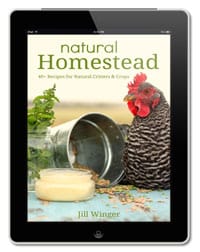 In Natural Homestead, you’ll find everything you need to create a more natural homestead, garden, and barnyard including:
In Natural Homestead, you’ll find everything you need to create a more natural homestead, garden, and barnyard including:
- How to put together a natural supply cabinet
- If pumpkin seeds, garlic, diatomaceous earth, baking soda, vinegar, and kelp are merely old wives’ tales or are truly beneficial
- Tips for managing parasite loads, how to identify wormy animals, and breakdowns of natural dewormer alternatives
- How to use essential oils in your barnyard and garden
- How to mix up grain-free, corn-free, and soy-free rations for your flock
- How to keep your facilities clean, minus the use of harsh chemicals such as bleach
- How to battle bugs, fungus, and weeds without using chemicals that are toxic to you, your kids, or your critters
There’s 40+ recipes, 60+ full-color photos, and lots of old-fashioned wisdom!
Grab your copy in Kindle, PDF, OR paperback here.
